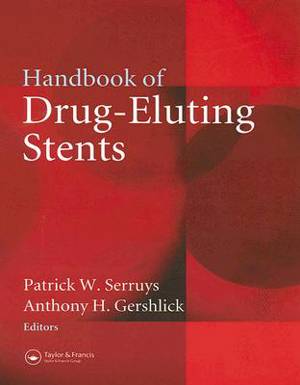
- Afhalen na 1 uur in een winkel met voorraad
- Gratis thuislevering in België vanaf € 30
- Ruim aanbod met 7 miljoen producten
- Afhalen na 1 uur in een winkel met voorraad
- Gratis thuislevering in België vanaf € 30
- Ruim aanbod met 7 miljoen producten
Zoeken
€ 222,95
+ 445 punten
Omschrijving
Over the past few years, the focus in interventional cardiology research has centered on reducing restenosis with the use of antiproliferative pharmacological agents. The use of these drugs, hitherto, has failed, most probably because of low active drug levels at the target site. This problem led to the development of local drug delivery using stents, since they can serve as a reservoir for local drug administration and are in immediate contract with the coronary artery wall, thus ensuring maximum delivery of the pharmacological agent. Drug-eluting stents provide an entirely new spectrum of potential therapies for restenosis. Handbook of Drug-Eluting Stents, under the editorial direction of Patrick Serruys, one of the world's leading interventional cardiologists, and Tony Gershlick, a pioneer in the field of drug-eluting stents, provides the reader with up-to-date information on which stents and pharmacological agents in use or about to be launched, the kinetics of the drugs involved, and what the future may hold. Short Contents
Specificaties
Betrokkenen
- Auteur(s):
- Uitgeverij:
Inhoud
- Aantal bladzijden:
- 392
- Taal:
- Engels
Eigenschappen
- Productcode (EAN):
- 9781841841328
- Verschijningsdatum:
- 14/06/2005
- Uitvoering:
- Hardcover
- Formaat:
- Genaaid
- Afmetingen:
- 196 mm x 256 mm
- Gewicht:
- 1242 g

Alleen bij Standaard Boekhandel
+ 445 punten op je klantenkaart van Standaard Boekhandel
Beoordelingen
We publiceren alleen reviews die voldoen aan de voorwaarden voor reviews. Bekijk onze voorwaarden voor reviews.











